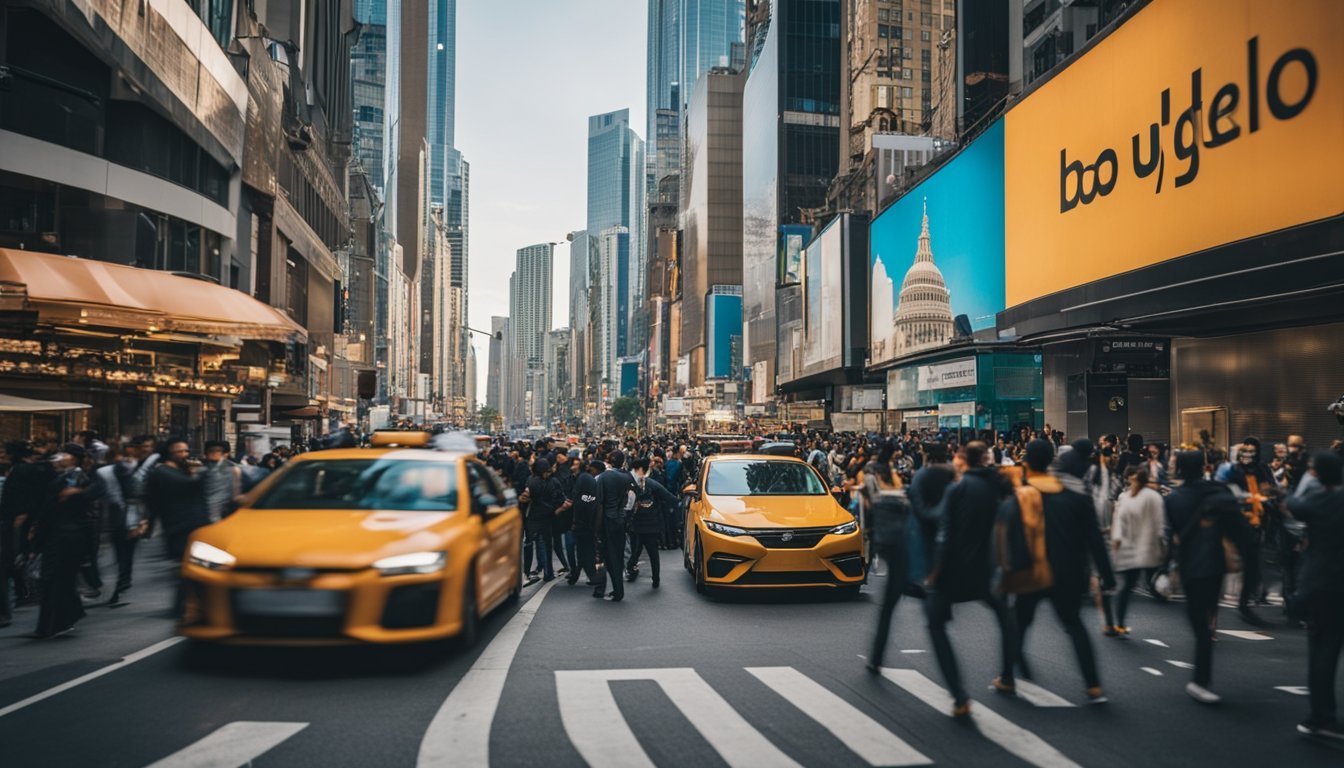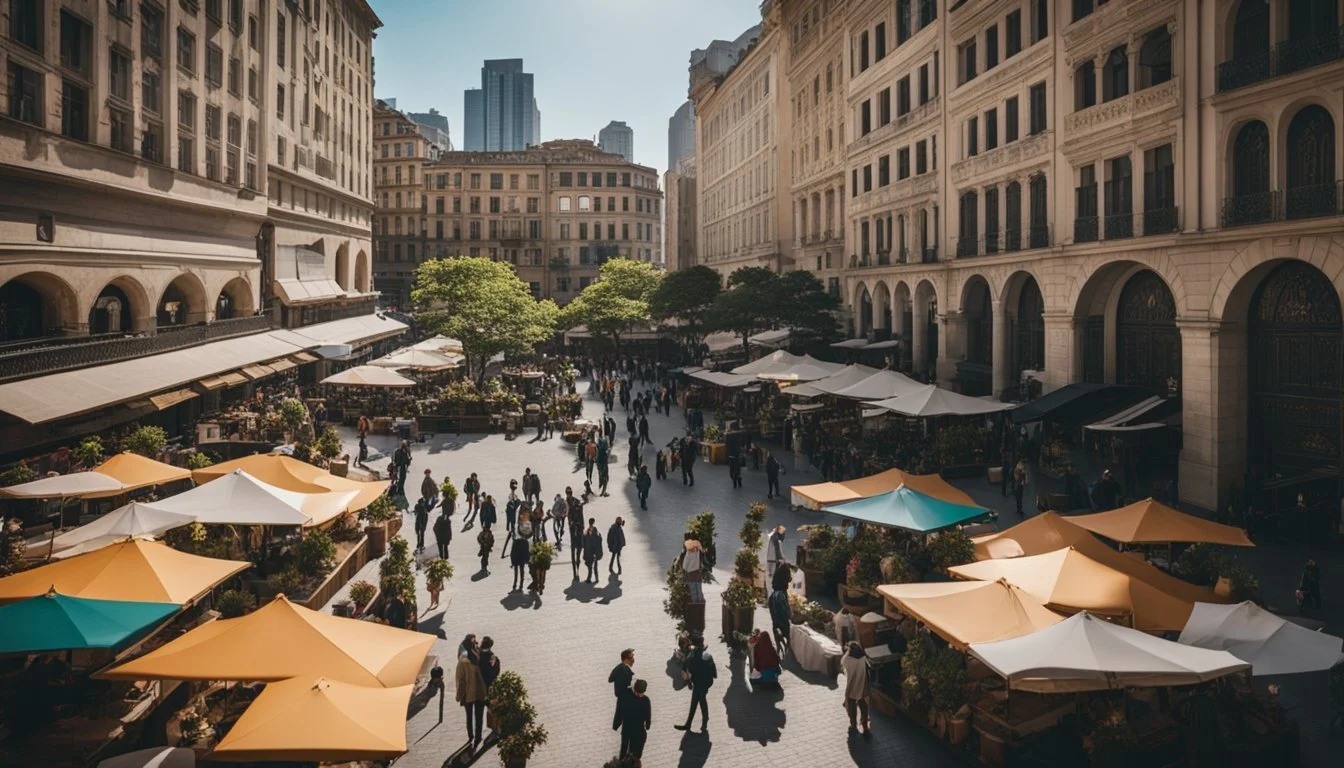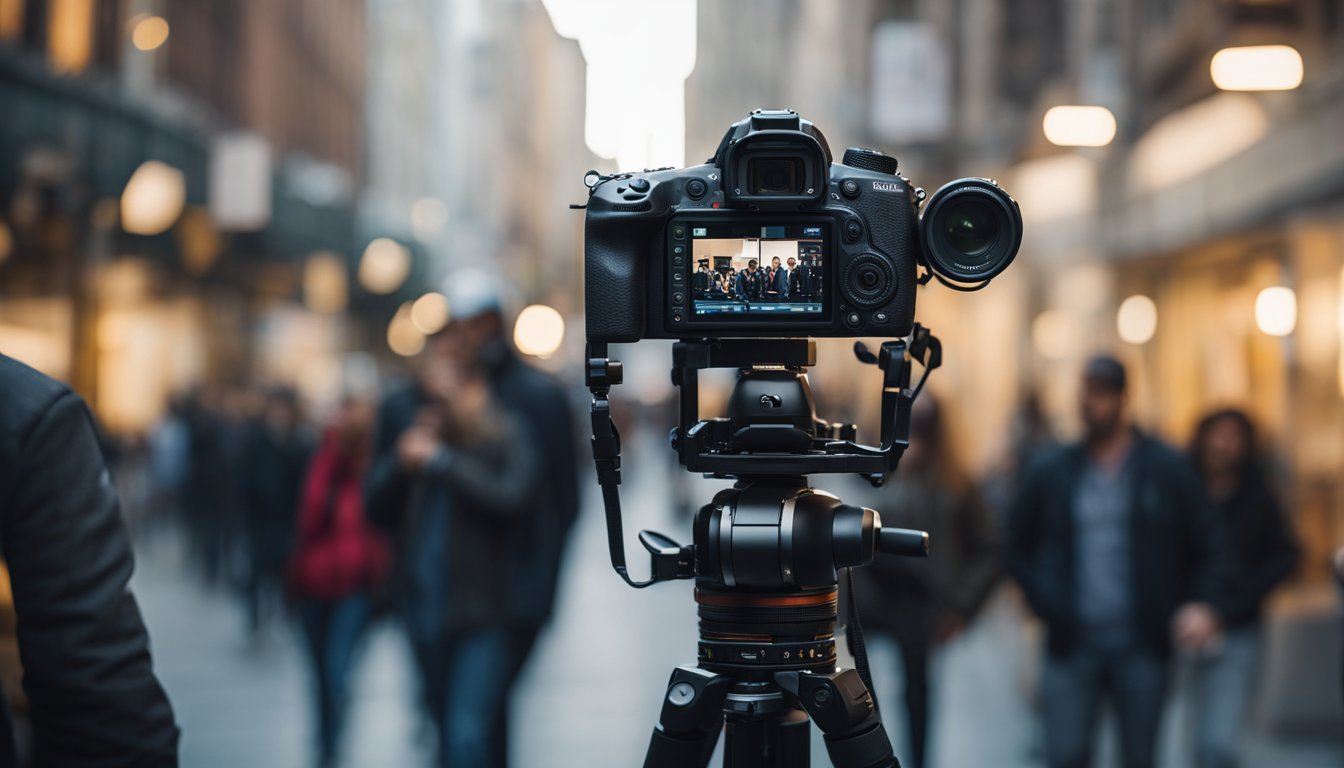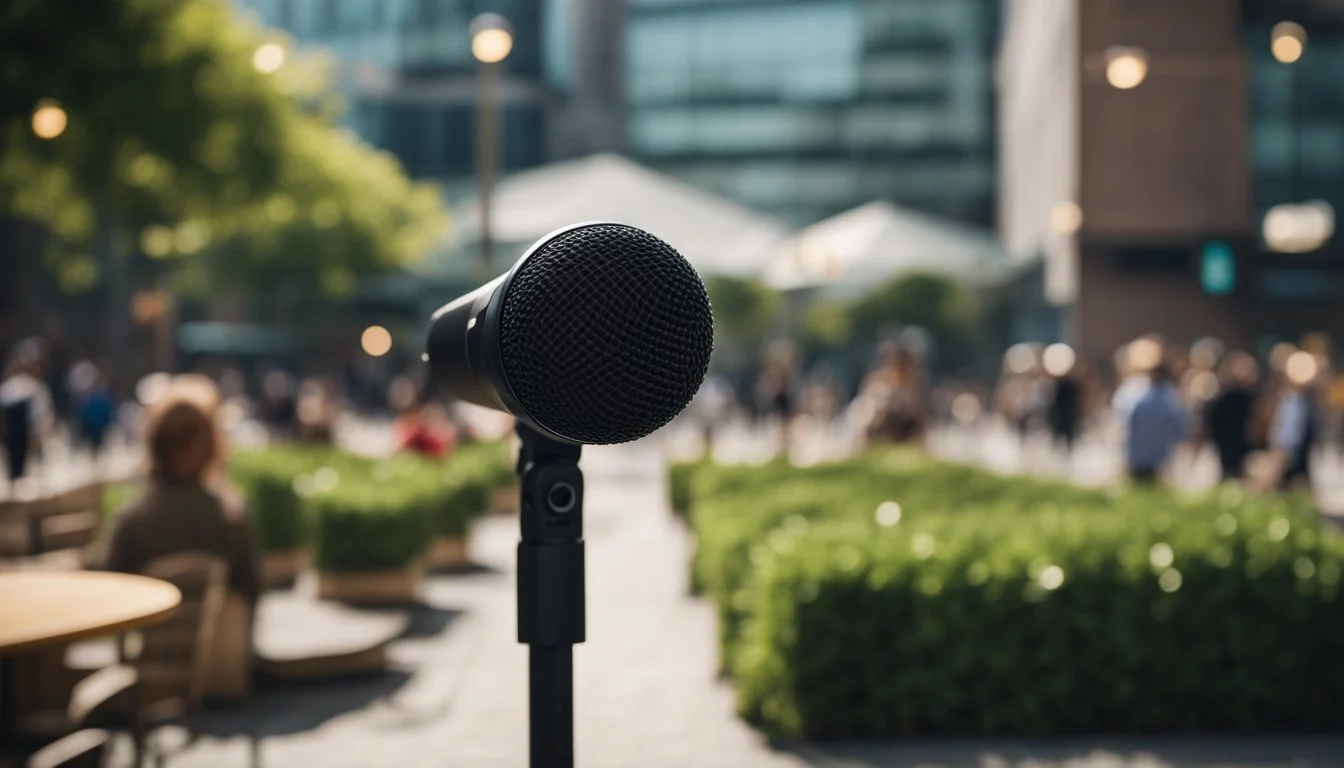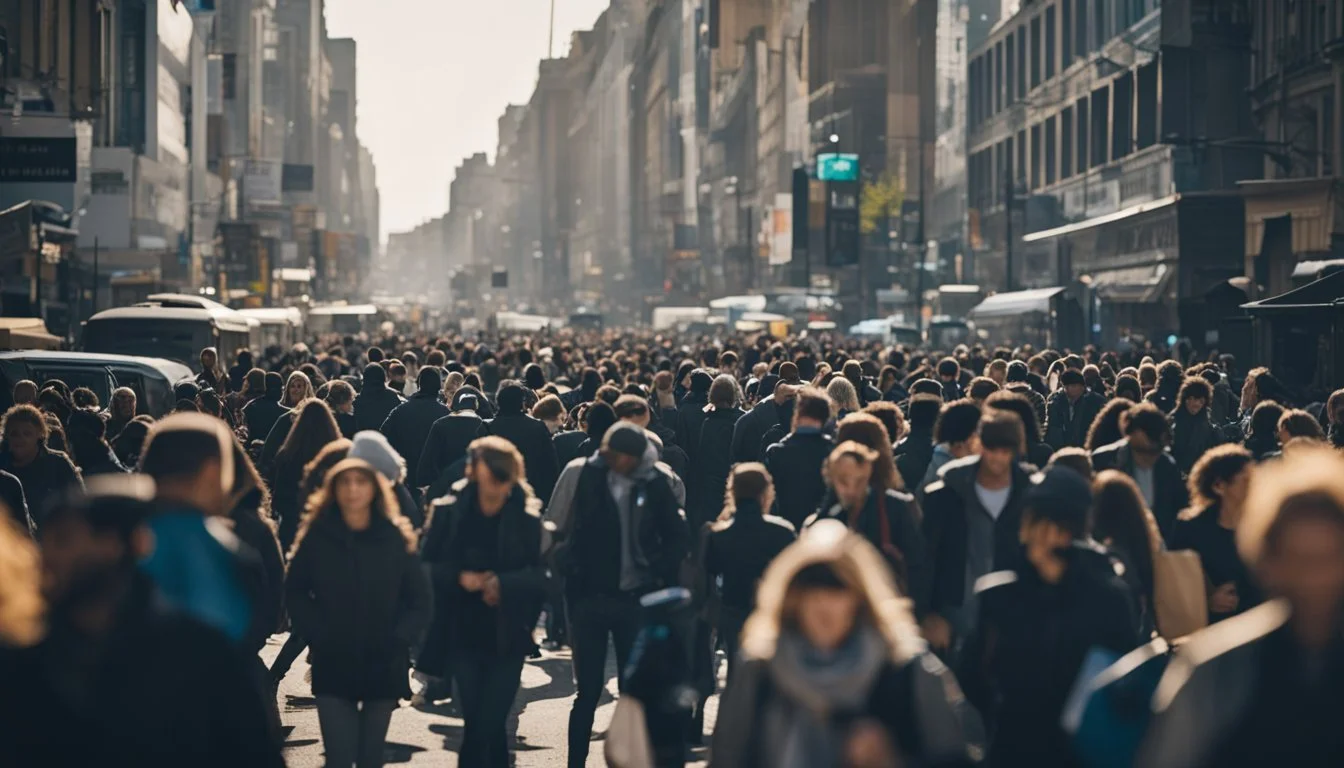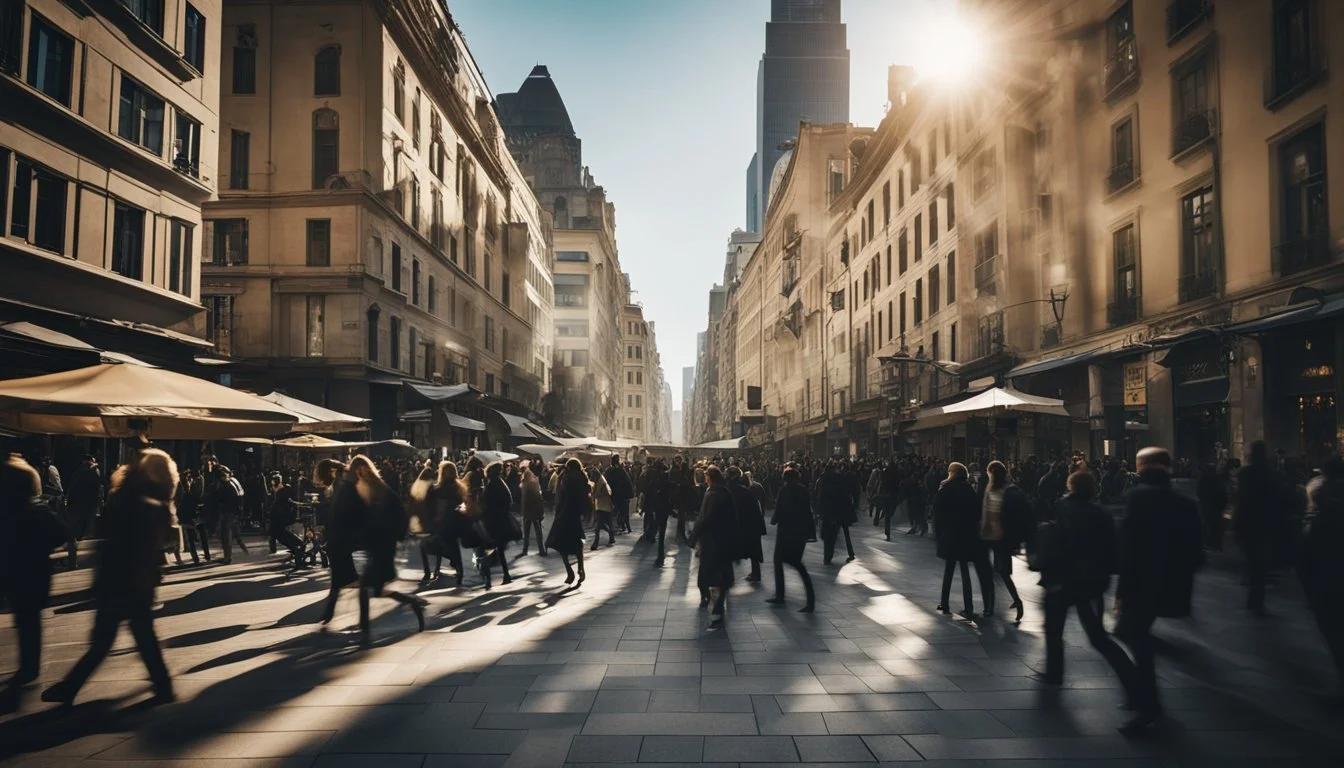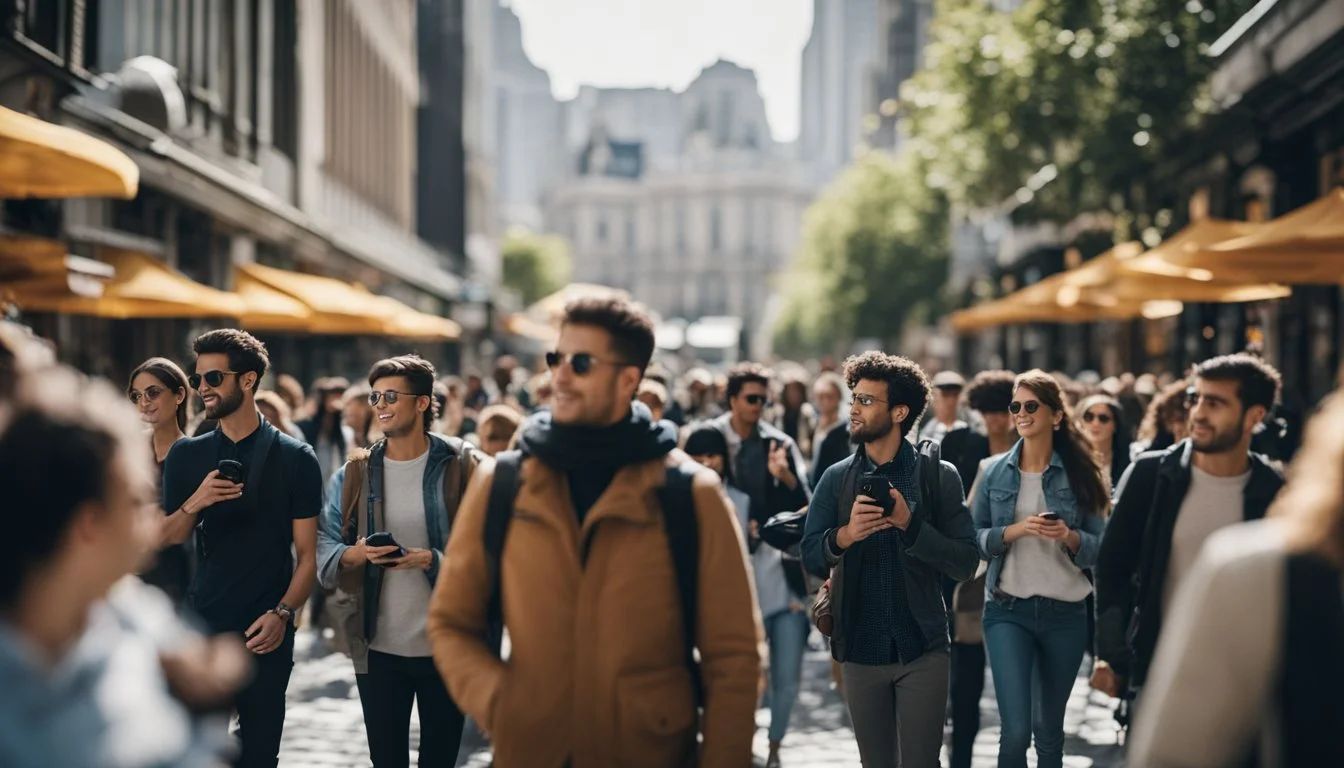12 Expert Tips for Filming in Crowded Public Spaces
Mastering the Art of Urban Shoots
Navigating the challenges of filming in crowded public spaces requires a blend of technical skill, legal know-how, and social awareness. With the bustling backdrop providing a dynamic setting, filmmakers often face unique obstacles that necessitate expert advice and careful planning. Mastering these elements not only enhances the quality of your footage but also ensures a smooth and respectful filming process.
Capturing authentic moments in such environments can greatly enrich a narrative, whether it be for a documentary, vlog, or feature film. Managing everything from permissions to crowd interactions is crucial for success. Recognizing and addressing potential issues beforehand can save time, prevent conflicts, and create a more engaging visual story.
1) Scout the location beforehand
Scouting the location prior to filming is essential for a successful shoot in crowded public spaces.
It gives filmmakers a chance to assess the area, understand the flow of people, and identify potential challenges. This helps in planning the logistics, such as where to set up the camera and how to manage the crowd.
During the scouting, film crews should take note of lighting conditions at different times of the day. This ensures that they can choose the best time to shoot, avoiding harsh shadows or overexposure.
Additionally, checking for noise levels is crucial. Ambient sounds from traffic, construction, or other activities can interfere with recording clean audio.
Securing the necessary permits is another important step. Knowing the local regulations and obtaining the permissions required avoids legal issues and ensures a smoother shoot.
Finally, engaging with property owners or local authorities can provide valuable insights and support. They may offer access to otherwise restricted areas or provide guidance on the best times to film.
2) Use a Lightweight Camera Rig
Selecting a lightweight camera rig can significantly improve the ease of filming in crowded public spaces. Heavy equipment can be cumbersome and draw unwanted attention. A portable rig allows for better maneuverability and less physical strain during extended shoots.
Lightweight rigs, like handheld or shoulder rigs, are practical solutions. These options provide necessary stability while enabling the camera operator to move fluidly through the crowd. This ensures that footage remains steady and professional, even in bustling environments.
Smaller rigs are also beneficial for quick deployment. Filmmakers can rapidly set up or pack away their gear, minimizing disruption. This agility is especially valuable in dynamic, unpredictable settings where opportunities for shots may be fleeting.
Using compact rigs can also help in gaining more natural reactions from the public. Smaller setups can be less intrusive, making people more comfortable and less aware of being filmed. This can lead to more authentic and candid footage.
Choosing the right rig requires understanding the specific needs of the shoot and balancing stability, portability, and ease of use. With the right lightweight rig, capturing high-quality footage in crowded spaces becomes a more manageable and efficient task.
3) Employ a directional microphone
Using a directional microphone can significantly improve audio quality in crowded public spaces. These microphones are designed to pick up sound from a specific direction, minimizing background noise. This feature makes them ideal for capturing clear audio in noisy environments.
Shotgun microphones are a popular type of directional microphone. They have a narrow pickup pattern, which helps to focus on the subject's voice while ignoring ambient sounds.
Placement is crucial when using a directional microphone. Pointing the microphone correctly at the subject ensures the best sound capture. This technique is especially useful in settings with a lot of background chatter.
Another advantage of directional microphones is their versatility. They can be mounted on cameras or used handheld, providing flexibility in various shooting scenarios.
Using a windshield or windscreen with a directional microphone can help reduce wind noise during outdoor filming. Wind noise can be distracting, and this accessory helps to maintain sound clarity.
Incorporating a directional microphone into the filming setup is a practical step. It enhances audio quality and ensures that the subject's voice is clear and distinct from surrounding noise.
4) Plan your shots meticulously
Planning is paramount when filming in crowded public spaces. Before arriving at your location, research the area and identify key spots that could serve as compelling backdrops.
Consider the timing. Crowded places often have peak times. Arriving earlier or staying later can provide opportunities for less obstructed shots.
Visualize the final composition in your mind. This helps in ensuring that your shots align with your creative vision.
Prepare your equipment in advance. Ensure your batteries are charged, memory cards are cleared, and lenses are clean to avoid interruptions.
Scout the location if possible. Familiarize yourself with potential angles and the flow of people to anticipate where and when to shoot.
Utilize a shot list. Having a shot list can streamline the filming process and ensure you cover all necessary angles and frames.
Communicate with your team clearly. If you have a crew, make sure everyone knows their roles and the plan for capturing each shot. This coordination can prevent confusion and missed opportunities.
5) Blend in with the crowd
Using equipment that doesn't attract unnecessary attention helps filmmakers capture authentic scenes. Smaller cameras or mobile devices can be less intrusive and allow for more natural interactions.
Positioning yourself in areas where others are filming or taking photos can also reduce suspicion. Large public events or tourist hotspots make it easier to blend in with the crowd.
When filming in crowded spaces, wearing neutral clothing is crucial. Bright colors or branded apparel can draw attention and create unwanted awareness among passersby.
Acting like an innocent bystander can diminish interest from people around you. Avoid making sudden movements or gestures that could compromise the natural feel of the scene.
6) Be Mindful of Privacy Laws
Understanding privacy laws is crucial when filming in public spaces. Each region or country may have different regulations, so it's important to research and comply with local laws.
Film crews should prioritize the privacy of individuals in public areas. This includes obtaining consent from those who will be clearly visible in the footage. In crowded spaces, it's nearly impossible to ask everyone, but an effort should be made to respect people's privacy.
Signage can be helpful. Posting clear signs indicating a filming activity is in progress can inform the public and offer them a chance to avoid the area if they prefer not to be filmed.
Be aware of the legal boundaries when filming minors. Extra precautions should be taken, and consent from guardians or parents is typically required. Also, avoid filming in areas where people have a reasonable expectation of privacy, such as restrooms or private properties without permission.
By staying informed and respectful, filmmakers can navigate privacy laws effectively while conducting their shoots. Utilizing these guidelines helps ensure a smoother filming process with fewer legal complications.
7) Utilize natural lighting
Natural lighting can significantly enhance the quality of a film shot in public spaces. When filming outdoors, the sun provides an excellent, free source of light.
Early morning or late afternoon light tends to be softer and more flattering. The golden hour, the period shortly after sunrise and before sunset, provides warm tones and long shadows that can add depth to the visuals.
Using natural reflectors like buildings, water bodies, or the ground can help amplify and diffuse sunlight. Strategically positioning these elements can create a more balanced and appealing image by bouncing light into darker areas of the scene.
Filming under natural shade from trees or structures can mitigate harsh midday sunlight. This reduces unwanted shadows and creates a more even and diffuse light, making the subjects look more natural and visually appealing.
In some locations, artificial reflectors and diffusers can be used in combination with natural light. Devices like a softbox or a bounce board can help control the intensity and direction of light, ensuring well-lit footage even in variable natural conditions.
8) Have a Backup Battery Handy
Filming in crowded public spaces often takes longer than anticipated. It's crucial to ensure uninterrupted filming by having a backup battery available. Equipment running out of power can result in missed opportunities and delays.
Backup batteries offer flexibility. They can power not just cameras but also other essential gear like lights and microphones. This ensures that the entire setup remains operational throughout the shoot.
Power banks are another useful option. They are portable and can recharge multiple devices. Choices range from small USB power banks for phones to larger versions for more demanding equipment. It's wise to charge all batteries and power banks fully before heading out.
Keeping backup batteries and power banks easily accessible will help mitigate any unexpected power issues, enabling a smoother filming process in crowded public spaces.
9) Engage with the Public Politely
When filming in crowded public spaces, it's crucial to interact respectfully with those around you.
Approach individuals with a friendly demeanor. A smile can make a significant difference. Asking for permission, even when it's not legally required, shows courtesy and can prevent potential conflicts.
Be transparent about your project. Share a brief explanation of what you are filming and why. This openness can build trust and encourage cooperation from the public.
Listen to concerns and feedback. If someone feels uncomfortable, address their concerns promptly. Sometimes, a simple reassurance can ease tensions and create a more supportive atmosphere.
Maintain a respectful distance from bystanders. Avoid intruding on personal space, particularly in sensitive or emotional situations.
Encourage voluntary participation. Not everyone will want to be on camera, and that choice should be respected. Offer the option to step out of the shot if anyone feels uneasy.
Engaging politely contributes to a positive environment. It helps ensure smoother filming and fosters goodwill among the public, making the process more enjoyable for everyone involved. Being mindful of these practices can significantly impact the success and reception of your project.
10) Capture Ambient Sound Separately
Capturing ambient sound separately is crucial when filming in crowded public spaces. Background noise often overwhelms important audio elements. By recording ambient sounds independently, filmmakers retain control over the audio mix. This approach allows for better balance and clarity in post-production.
Using a dedicated audio recorder helps capture high-quality ambient sound. Unlike built-in camera microphones, external recorders offer superior sensitivity and accuracy. They can pick up subtle nuances of the environment that enhance the film's realism.
Recording ambient sound separately also allows for flexibility in the editing process. Filmmakers can adjust the levels of background noise without affecting dialogue or other primary audio. This creates a more polished and immersive final product.
Selecting the right equipment is essential. Shotgun microphones and portable recorders are popular choices. These tools can isolate specific sounds, reducing unwanted noise and capturing the intended atmosphere effectively.
Location scouting plays a key role in ambient sound recording. Identifying areas with distinctive yet manageable soundscapes ensures that the captured audio fits the film's needs. This preparation minimizes surprises during the actual shoot.
By focusing on capturing ambient sound separately, filmmakers enhance the overall audio quality of their projects. This practice contributes significantly to the audience's immersion and enjoyment.
11) Use Wide-Angle Lenses
Wide-angle lenses can be invaluable when filming in crowded public spaces. These lenses have a broader field of view, allowing you to capture more of the environment without needing to move far from your subject. This can be essential in busy areas where freedom of movement might be restricted.
Using a wide-angle lens helps in capturing the vibrancy and chaos of a crowd. It can make the viewer feel immersed in the scene, showcasing the multitude of interactions and activities happening simultaneously.
Wide-angle lenses also help in making tight spaces appear more expansive. This feature is particularly useful when filming in narrow streets or packed venues, providing a comprehensive view of the surroundings.
Be cautious of distortion, which can occur with wider lenses, especially around the edges of the frame. Adjusting the camera angle and distance can help minimize this effect, maintaining a natural look in your shots.
Consider combining subjects with their environment to create dynamic compositions. This technique ensures the scene remains engaging while the main subject stands out against the bustling backdrop.
Experiment with different perspectives to see what best showcases the crowded setting. Low-angle shots can add a sense of scale and depth, while high-angle shots offer a unique overview of the scene.
12) Rely on handheld stabilizers
Filming in crowded public spaces can be challenging due to constant movement and various obstacles. Handheld stabilizers are valuable tools for maintaining shot stability. They help reduce shake and wobble, providing smoother footage.
Different types of stabilizers cater to various needs. For action shots, options like the Karma stabilizer facilitate seamless transitions from handheld to aerial views. Gimbals, such as the 3-Axis GoPro Gimbal Stabilizer, are pre-programmed and user-friendly, making them ideal for quick setups.
Even without a gimbal, simple techniques can improve handheld footage. Holding the camera near the sternum or using the camera strap as an additional point of contact increases stabilization. This method leverages the body's natural stability.
Stabilizers also make it easier to manage dynamic movements. By simplifying movements and keeping the camera steady, filmmakers can focus on capturing important moments without worrying about shaky footage. This is especially crucial in a crowded setting where movement is often unpredictable.
Using both hands to hold the camera and bringing it close to the chest creates a smoother handheld image. Employing these tools and techniques helps ensure high-quality, professional-looking videos in bustling environments.
Pre-Filming Preparation
Planning ahead is crucial when filming in crowded public spaces. It's essential to be aware of local laws and carefully scout locations to ensure smooth and legal operations.
Understanding Local Regulations
Before filming in any public area, it's important to understand local regulations. Different cities and municipalities have varying rules about permits and restrictions. Filmmakers should reach out to local authorities to inquire about necessary permits. Failure to obtain the right permits can lead to fines or being asked to stop filming.
Public spaces may have specific ordinances related to noise levels, crowd control, and privacy rights. Filming without regard for these laws can result in legal complications. In areas with heavy foot traffic, obtaining clear permission can help avoid conflicts with locals or law enforcement.
Scouting the Location
Scouting the location ahead of the shoot helps anticipate challenges. Visiting the site during the same time of day as planned filming can reveal lighting conditions and crowd density. Observing pedestrian and vehicle traffic patterns provides insights on managing logistics, such as equipment placement and crew movement.
Understanding the layout of the location is vital for setting up shots without obstructing public access. Noting the proximity of power sources, restrooms, and potential shelter areas in case of bad weather is also helpful. Coordinating with local businesses or residents can also smooth out the process and provide additional support if needed.
Technical Considerations
When filming in crowded public spaces, choosing the right equipment and managing audio in noisy environments are crucial. Proper equipment selection ensures clear visuals, while effective audio management captures crisp sound despite background noise.
Choosing the Right Equipment
Selecting appropriate equipment is essential for capturing high-quality footage. A portable and durable camera is recommended to handle the bustling environment. Cameras with image stabilization help reduce shaky footage caused by movement in crowded areas.
For versatility, zoom lenses allow filmmakers to adjust framing quickly without moving through the crowd. Using a compact tripod or a shoulder rig can provide stability and flexibility. Additionally, having spare batteries and memory cards ensures uninterrupted filming.
Managing Audio in Noisy Environments
Capturing clear audio amidst background noise is challenging. Directional microphones are useful as they focus on sounds from a specific direction, minimizing ambient noise. Lapel microphones attached to the subjects can also help in recording clear dialogues.
Using a windshield cover on microphones can reduce wind noise outdoors. In particularly noisy settings, recording ambient sound separately and adjusting it during editing can improve audio quality. Investing in a portable sound mixer to monitor and adjust audio levels on the spot is also beneficial.

